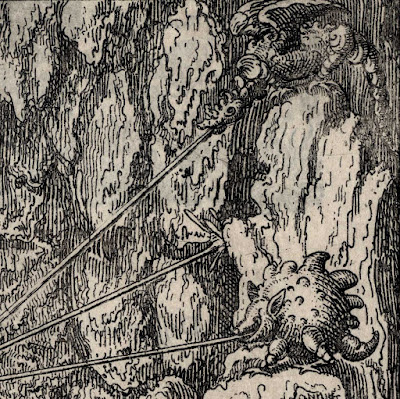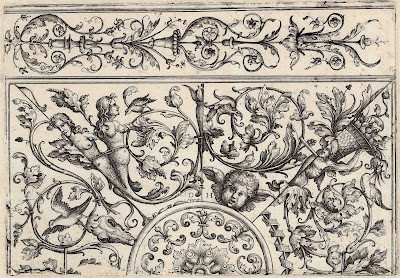Salomon de Caus (1576–1626) (designer); unidentified
etcher
“Cave with
fountain: Ball raised by a jet of water”, 1615, Plate 2 from Book 2 in “La
raison des forces mouvantes” (The reason of the moving forces), published by
John Norton (Frankfurt, 1615).
Etching with
plate tone on fine laid paper with printed text and two woodcut prints verso.
From the 1624
edition (an attribution based on signs of light wear to the plate).
Size: (sheet)
32.3 x 22.9 cm; (plate) 30.8 x 21 cm; (image borderline) 29.2 x 20.3 cm
See
illustrations from the 1624 edition of this book published by C Sevestre
(Paris) at the Bibliothèque Nationale de France: http://gallica.bnf.fr/ark:/12148/btv1b2100042f/f1.planchecontact
Condition: good
impression of the etching (recto) with some wear to the plate and the woodcut
prints (verso) are richly inked, crisp impressions. The sheet is in excellent condition (i.e.
there are no tears, holes, folds, stains, abrasions or foxing).
I am selling
this fascinating image of exceptional rarity designed by one of the most
important engineers of the Baroque age who is famous for his fountains, follies
and animated garden features—as seen in this amazing fountain design—for the
total cost of AU$226 (currently US$168.03/EUR149.50/GBP130.45 at the time of posting
this listing) including postage and handling to anywhere in the world.
If you are
interested in purchasing this remarkable design for a garden grotto exploring hydraulic
principles of water jets and steam-driven pumps, please contact me
(oz_jim@printsandprinciples.com) and I will send you a PayPal invoice to make
the payment easy.
This print has been sold
This startling
image is a fountain designed by Salomon
de Caus who is one of the most famous engineers of what the Met Museum
describes as “automata or trick fountains and water jokes in the
seventeenth-century garden” (http://www.metmuseum.org/toah/works-of-art/49.122/).
The fountain featured here is set in a grotto with a ball suspended on a single
jet of water. What makes this particular fountain design very special is that
it illustrates one of the first uses of steam driven pumps to create sufficient
force that a ball could be shot skywards. In fact, the use of steam to drive
devices such as this fountain was so novel and such an engineering feat that it
earned de Caus the title of being the inventor of the steam engine. Sadly, he
wasn’t the inventor as history has since proved, but at the time the hydraulic
principles underpinning this jet of water and the eight water-spitting
grotesque critters making merry havoc made de Caus a highly sought after
designer for the French, German and English nobility.




















































